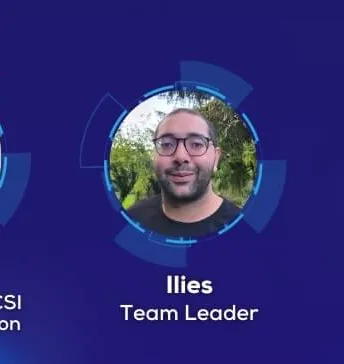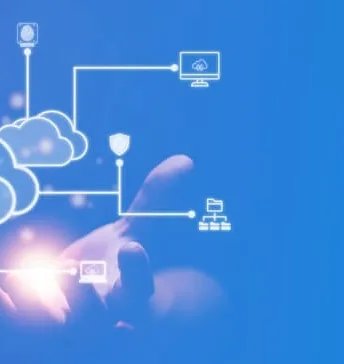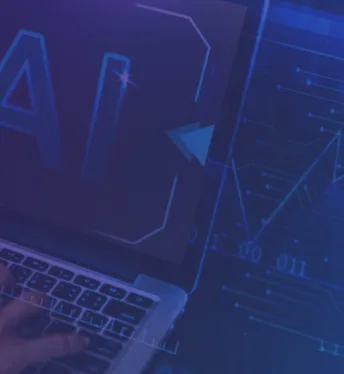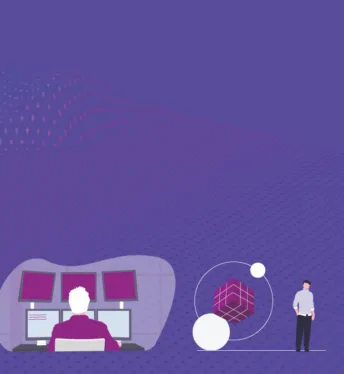Transition is defined as the period or process of changing from one state to another. In business, transitional periods are a crucial time where you can set the stage for your organization’s transformation by establishing the right conditions and context for significant changes to take place.
By offering breathing room for your employees to adapt and adjust to new expectations, learn necessary skills and processes, and reflect on the requirements for transformation, they can effectively embrace change.
The Three Pillars of Transition and Transformation
Successful transition is only possible when the three pillars of people, processes and tools are accounted for. By aligning these three pillars, that period of transition becomes a powerful engine that supports your transformation into a more adaptable, resilient, and progressive organization.
1. People
Your people play a crucial role in transition and transformation. They are responsible for driving and managing change and ensuring successful implementation. Alongside your people, your leadership plays a pivotal role in guiding transformation by setting the vision, inspiring others, and fostering a supportive culture that embraces and navigates the challenges of change.
2. Processes
Processes are essential in establishing frameworks and guidelines that provide structure and direction during transformation. By doing so, processes ensure effective execution of the transformation plan, enabling a smooth and coordinated implementation that aligns with organizational goals and objectives.
3. Tools
Tools support efficient and effective implementation by providing the necessary resources and capabilities to execute change. Organizations can leverage technology to facilitate successful transformation, harnessing its potential to automate processes, enhance communication, and enable data-driven decision-making.
To best align the three pillars of people, processes, and tools in support of transition and transformation, organizations should focus on fostering collaboration among these elements.
This involves ensuring that people are actively engaged and empowered throughout the change, providing them with the necessary training and resources to adapt. Processes should be designed to be flexible, adaptable, and well-communicated, allowing for seamless integration of new practices or processes, and organizations should invest in appropriate tools and technologies that align with the transformation objectives, enabling efficient execution and empowering individuals to work effectively.
Navigating Challenges During Transition
Transition can come with many challenges. The most common challenges faced by organizations during this period are:
- Limited written documentation
Having access to limited written documentation makes it difficult to transfer knowledge, understand processes, and establish clear accountability among stakeholders during transition. - Past negative experiences
Negative past experiences can erode trust in the transition process, posing challenges by creating skepticism, resistance, and a reluctance to embrace change. - Cultural and regional differences
These differences can present challenges in terms of communication, collaboration, and alignment of expectations. - Resistance to change
Change can be difficult for individuals and organizations to embrace, often leading to resistance from employees during the transition process.
Adaptability is key to overcoming all these challenges. Thankfully, transition provides organizations with a “stabilization period” that allows them to adjust and become comfortable with the changes brought about by transformation. This helps to minimize the challenges that may arise after the transformation is complete.
Typically, it takes around three to six months for everyone in an organization to adapt to the new ways of working introduced during the transition. This includes getting used to new processes, systems, or tools and becoming proficient in the new environment. However, the time required for this adjustment can vary based on the complexity of the changes and the level of support provided during the transition.
Benefits of Transition: Client Perspectives
At Stefanini we have years of experience managing transition and transformation for our clients. Our commitment to refining and improving our processes means we can offer unique benefits for organizations that partner with us as we help them adapt to new ways of working:
- A customized and agile transition process that supports your needs
- Open channels of communication that ensure you are heard at every stage
- Dedicated assistance that responds to problems quickly
- Effective change management designed to minimize disruption
Because we believe in your business, we work with you as a true partner who contributes to the overall success of your transition and transformation, not as a third-party.
Stefanini: A Trusted Partner in Transition
Stefanini’s Global Transition team has a powerful track record of supporting a wide variety of clients through unique transition processes. No matter your region or industry, our experienced and certified professionals provide expert guidance and support based on years of practical experience.
Our client satisfaction scores average over 3.5 out of 4, and we are proud of our Global NPS of 65.
Tap into a wealth of knowledge and skills that will ensure your transition provides a solid foundation for transformation, change and growth with Stefanini.
Find out more about how Stefanini can support your transition and digital transformation.




















